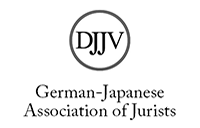Special Economic Zones as a Governance Tool for Policy Coordination and Innovation
Abstract
We usually take for granted the notion that Special Economic Zones (SEZs) are a limited area designed for stimulating the whole national economy. Japan has certainly had this type of SEZ since the return of Okinawa. However, we can also use SEZs as a tool for policy innovation and coordination between national and local governments. For example, Japan has such a type of zone, introduced by the Special Zone for Structural Reconstruction Act of 2002. Regulative reforms and deregulation are “tested” within the zone, followed by the introduction of the same regulative policy all over Japan if the test goes well. The Act also has a procedure in which local government proposes the deregulation or regulative reform to the national government, which creates a policy coordination system between the national and local levels.
The reason why SEZs are needed as a tool for multilevel governance is closely related to the status quo of local decentralization in Japan. If a municipality had competence to deregulate national regulations or exempt taxes, or if Japan had a federal system, there would be no need for SEZs. It is therefore very helpful to identify the characteristics of SEZs compared with local autonomy and a federal system. In the Japanese legal system it is possible that an ordinance can have more strict regulations, unless they conflict with the national law. Generally speaking, however, an ordinance cannot relax any national standard established by national law because the latter is considered to set the lower limit of any regulation. Some argue that an ordinance should be able to overwrite national regulatory standards set by national statues (“deviatory competence”) in order to realize decentralized governance structure. It could, however, destroy the traditional norm pyramid and trigger a collapse of the principle of the lawgoverned state.
It is appropriate to learn from experiences with the German federal system in order to evaluate the deviatory competence discussion in Japan because Germany introduced the deviatory legislative competence of a federal state in 2006. Although this is a subsystem of the federal structure, there are some remarkable and referable points to the Japanese discussion. This system keeps the balance of the flexibility and the limits set scrupulously for political decisions from the viewpoint of a policy coordination tool. The deviatory competence is restricted by the state constitution because the legislation belongs to state law. The federal parliament has initial legislative competence, which shows states a legislative model, and overriding opportunities with enacting a newer federal law against the state law. Constitutional provisions as to the federal system show the principle of loyalty to the federation and the requirement for homogeneity to the free and democratic order. The basic rights provisions also play an important role in setting the limit. In addition, European law puts restrictions on deviation. These limitations softly control the autonomous legislation of a state. Japan should also introduce such a legal scheme if the deviatory competence of an ordinance were acknowledged.
From a functional point of view, SEZs provide a tool that enables a system to distribute legislative competence to local governments within the framework of local autonomy. In other words, SEZs are a centralized assignment of legislative competence with a decentralized element. SEZs are a form of governance in which local governments can exclude the national positive law without a federal norm-hierarchy system that consists of federal and state law.






